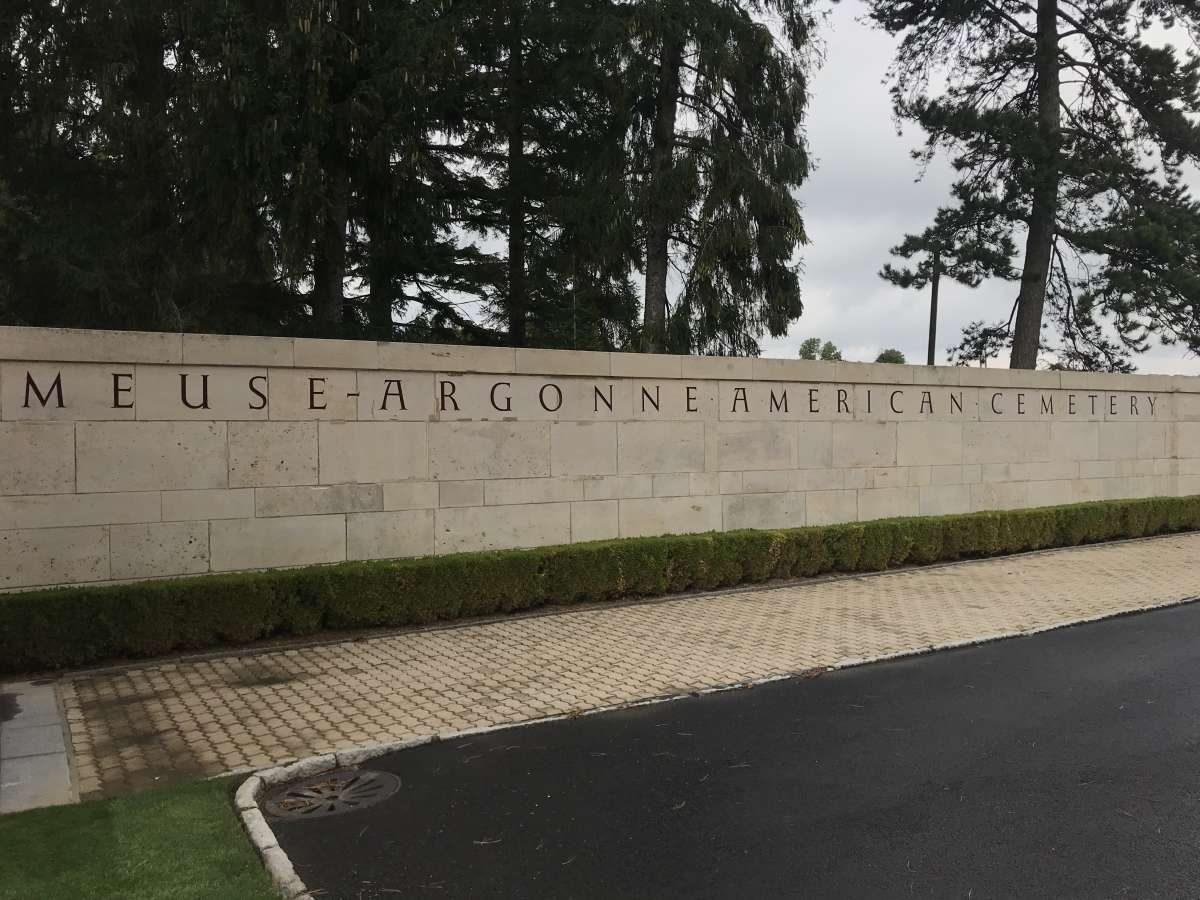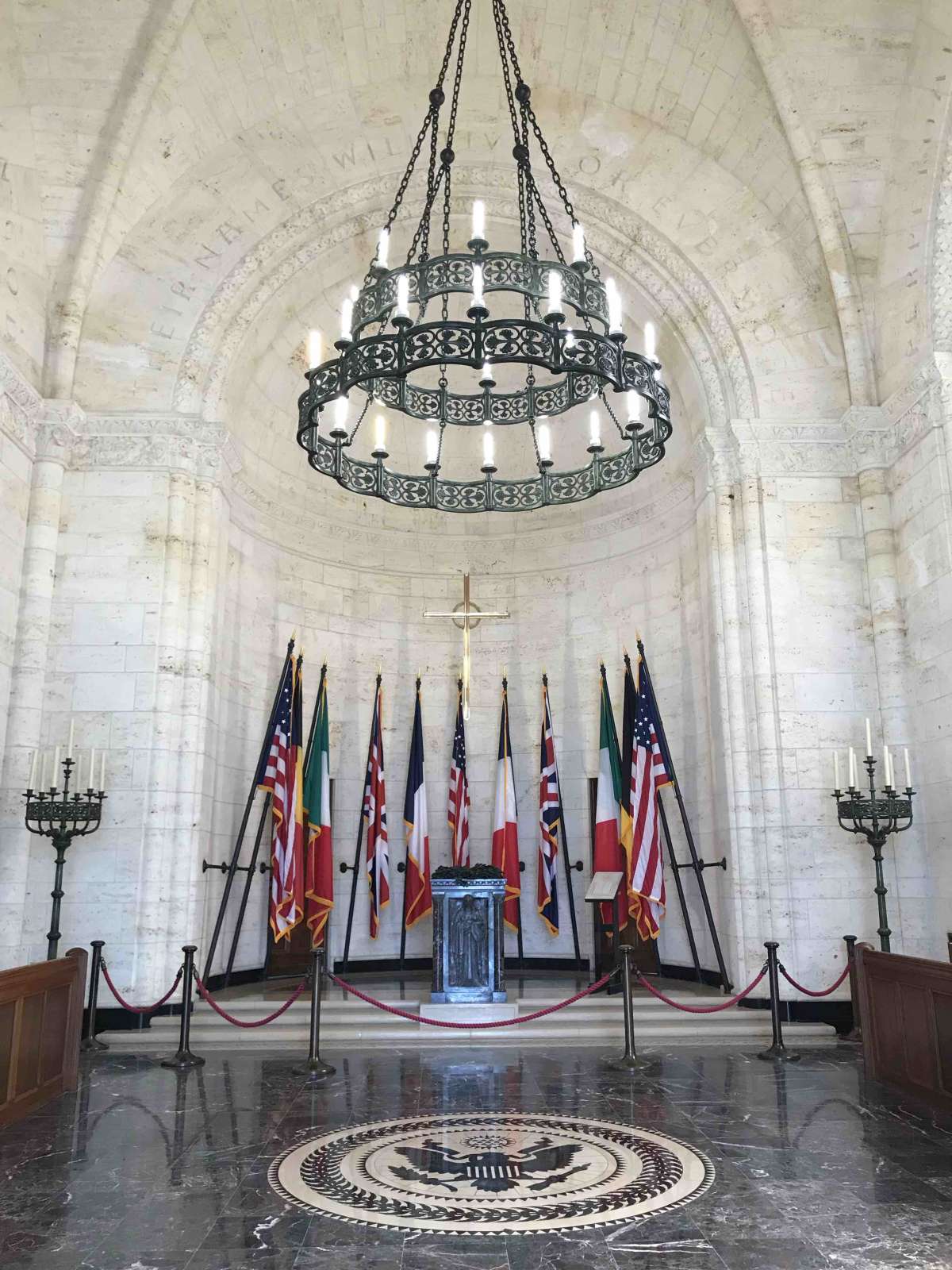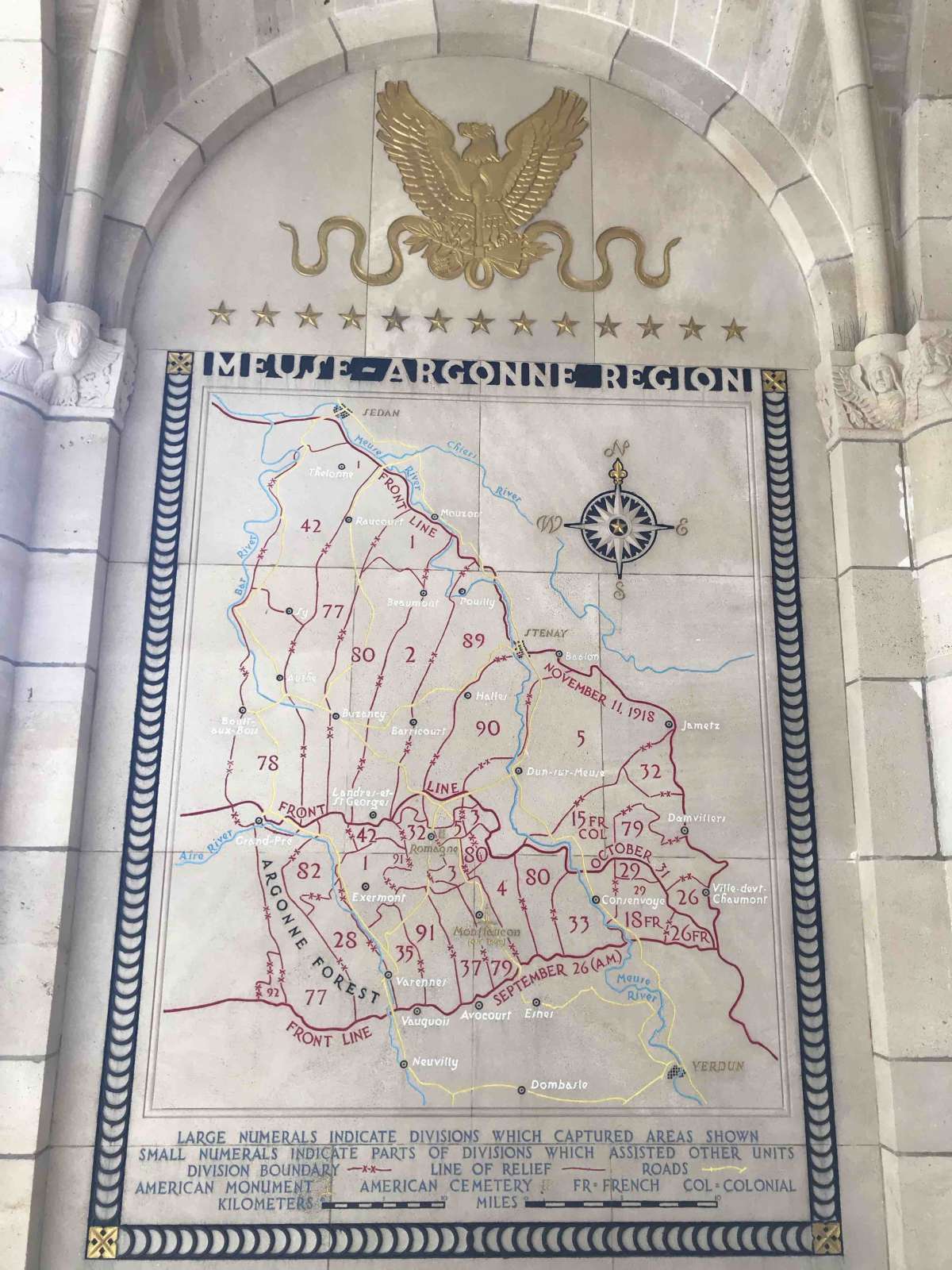Paying My Respects at Meuse-Argonne
Finding a connection to 100 years in the past

Four days into a week-long World War I battlefield tour landed our tour group at the Meuse-Argonne American Cemetery in the village of Romagne-sous-Montfaucon, France. The Meuse-Argonne contains the largest number of American military dead in Europe - over 14,000 men and women are buried there.
 The entrance to the Meuse-Argonne
The entrance to the Meuse-Argonne
That includes a man by the name of Napoleon Beaucage, killed in action on October 13th, 1918. I sought out Napoleon's grave for one reason: we share the same tiny, Michigan hometown with a population of less than 2,000 people.
 The chapel
The chapel
The grounds of the Meuse-Argonne are impeccable. Every gravestone is clean, and the grass and landscaping are impeccably manicured. A small but magnificent chapel is available for prayer, and for a place that exists because of violence, an undeniable feeling of peace is present.
 Napoleon Beaucage’s final resting place
Napoleon Beaucage’s final resting place
With poppies in tow, my husband and I left them at the resting places of our Michigander soldiers, and I sought out Napoleon. After all, we have a lot in common: French-Canadian ancestry, farming families, and we attended the same Roman Catholic church, making it very likely that this man knew my ancestors. And then it hit me that I may have been the only person from our hometown to have ever visited his grave in the last 100 years.
 A map of the region
A map of the region
The cemetery mostly honors those killed in the Meuse-Argonne defensive in World War I, including those who lost their lives in Northern Russia but remain missing. These soldiers are honored at the chapel. No matter if you have a personal connection or not, the Meuse-Argonne is a beautiful place to pay your respects to the war dead and experience history.
